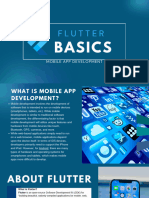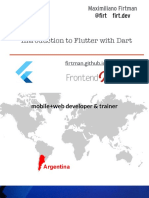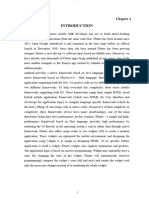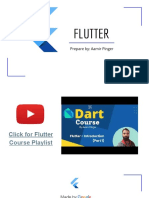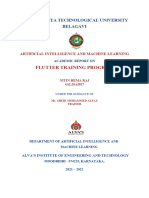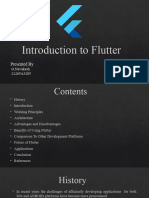0% found this document useful (0 votes)
28 views23 pages22 Flutter
Flutter is an open-source framework for developing mobile applications using Dart. It allows building applications for Android, iOS, web and desktop from a single codebase. Flutter uses widgets to build up its user interfaces which are rendered using its own rendering engine. The framework follows a layered architecture with the top layers providing widgets and the lower layers handling platform integration.
Uploaded by
ama akhanCopyright
© © All Rights Reserved
We take content rights seriously. If you suspect this is your content, claim it here.
Available Formats
Download as PDF, TXT or read online on Scribd
0% found this document useful (0 votes)
28 views23 pages22 Flutter
Flutter is an open-source framework for developing mobile applications using Dart. It allows building applications for Android, iOS, web and desktop from a single codebase. Flutter uses widgets to build up its user interfaces which are rendered using its own rendering engine. The framework follows a layered architecture with the top layers providing widgets and the lower layers handling platform integration.
Uploaded by
ama akhanCopyright
© © All Rights Reserved
We take content rights seriously. If you suspect this is your content, claim it here.
Available Formats
Download as PDF, TXT or read online on Scribd
/ 23





